|
THAIFÖLD, KAMBODZSA
2013.05.22.-05.29.
THAILAND, CAMBODIA
|
|

MAIN
PAGE
|
 |  |  |  |
3. NAP - DAY 3 -
2013.05.24.
SIEM RIEP & ANGKOR - CAMBODIA
Cambodian village, BANTEAY SREI, PRE RUP, ANGKOR THOM (Bayon, Baphuon, Phimeanakas), ANGKOR WAT
 SIEM RIEP ---> BANGKOK SIEM RIEP ---> BANGKOK
|
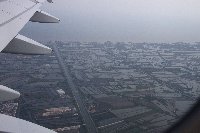 | 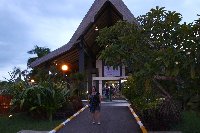 | 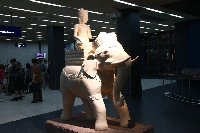 | 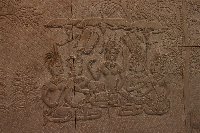 |
| 26. Rizsföldek Kamodzsában - Rice fields in Cambodia | 27. Siem Riep városka édes kis repülőtere - The cute little airport of Siem Reap town | 27. A repülőtér hatalmas csarnokainak egyike - One of the huge halls of Bangkok Airport | 28. A kambodzsai belépési engedély - Entry permission to Cambodia |
| | | |
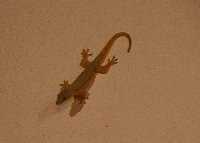 | 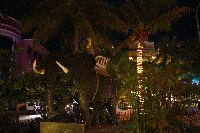 | 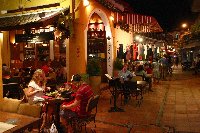 | 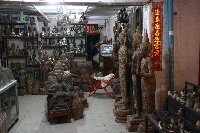 |
| 29. A falakon sok helyen vannak gekkók - Gekkos are seen often | 30. Elefántszobor Siem Riep városka főterén - Elephant statue on the main square of Siem Reap town | 31. A városka tele van hangulatos kisvendéglőkkel - Many cute restaurants in the town | 32. Képzőművészeti bolt - Shop of articrafts |
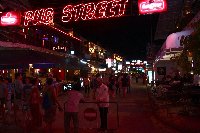 | 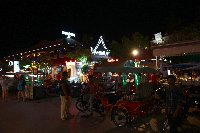 | 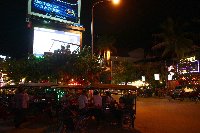 | 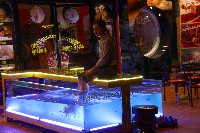 |
| 33. A városka este tele van túristákkal - The town is full of people by night | 34. Rengeteg tuk-tuk van, ami taxizásra szolgáló motoros tricikli - Tuk-tuks are tricycle taxis | 35. Itt mi is tuk-tukoztunk - We also travelled by tuk-tuk | 36. Itt a lábmasszázsra halakat használnak - The foot massage is carried out by fish |
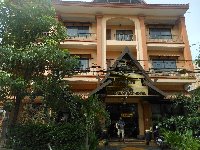 | 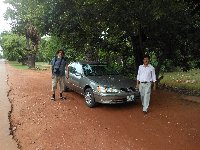 | 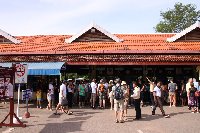 | 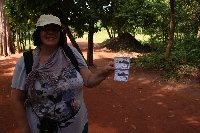 |
| 37. A kellemesen hangulatos Hotel Bat, udvarias személyzettel - The charming Hotel Bat, with polite staff | 38. Eng Li, aki egész napra a szuper túravezetőnk volt - Eng Li, who was our super guide for the whole day | 39. Az ANGKOR Régészeti Park bejáratánál jegyet vettünk - We bought ticket at the entrance of ANGKOR Archeologic Park | 40. ANGKOR belépőjegyek - ANGKOR entrace tickets |
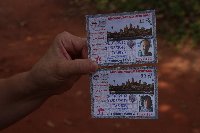 | 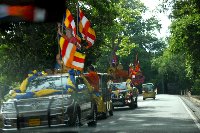 | 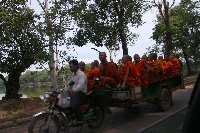 | 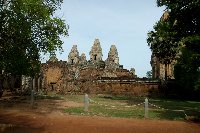 |
| 41. A belépőjegyekre az arcképünket is ráfotózták - Also our photo is included in the ticket | 42. A buddhizmus ünnepe volt éppen - It was Biddhism Day | 43. Rengeteg buddhista szerzetes utazott teherautókon - Many trucks were carried buddhist monks | 44. Az első templomrom, amit megláttuk - We saw this temple ruins |
| ... Falusi képek Kambodzsából - Country side and village life in Cambodia |
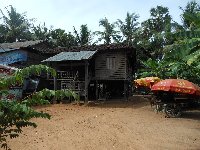 | 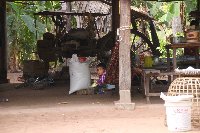 |  | 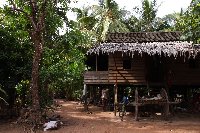 |
| 45. Tipikus falusi ház Kambodzsában - Typical village house in Cambodia | 46. Egy kisfiú pihen az árnyékban - A boy is having rest in the shade | 47. Kosárkészítő üzlete - Shop selling corbs | 48. A cölöpök fontosak árvíz idején, de egyben árnyékot is adnak - The hoses are built on stake against the flood. Better shade inder the house. |
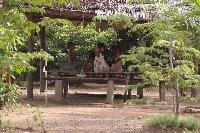 | 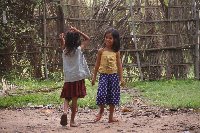 | 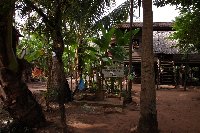 | 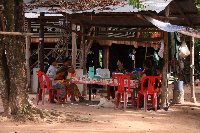 |
| 49. Gyerekek - Kids | 50. Gyerekek - Kids | 51. Sok kút külföldi magánszemélyek támogatásával épült - Water wells are sponsored by foreign persons. | 52. Családi beszélgetés - Family time |
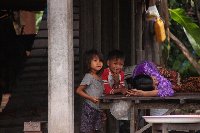 | 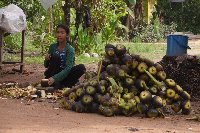 | 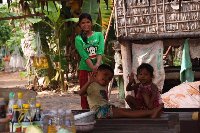 | 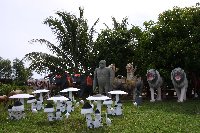 |
| 53. Gyerekek alvó mamával - Kids and sleeping mother | 54. Gyümölcsöt pucoló nő - Woman processing fruit | 55. Gyerekek mosolygó mamával - Kids and smiling mother | 56. Itt szobrokat árulnak - Statues are sold here |
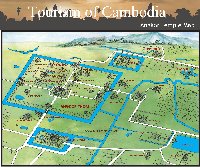 | Az
ANGKOR RÉGÉSZETI PARK - Mintegy 40 km2 területen találhatóak a régi
Khmer Birodalom 9. és 15- szd. között épült templomai és városai. Itt
található a régi világ legnagyobb városa is, Angkor Thom. A
terület nagy részét trópusi erdő borítja.
ANGKOR
ARCHEOLOGIC PARK - Stretching over some 400 square kilometres,
including forested area, Angkor Archaeological Park contains the
magnificent remains of several capitals of the Khmer Empire of the 9th
to the 15th centuries, including the largest pre-industrial city in the
world, Angkor Thom. |
... És tovább az ősi templomokhoz ... - ... And going to see the ancient temples now....
BANTEAY SREI (ejtsd: BANTEJSZREJ)
Ez
Angkor egyik legkisebb, ugyanakkor legdíszesebb hindu temploma, a khmer
építő- és díszítőművészet „ékszerdoboza”. A Sivának ajánlott templom
Angkorvattól harminc kilométerre északkeletre áll. II. Radzsendravarman
(944-968) és V. Dzsajavarman (968-1001) uralkodása alatt épült az egyik
bráhmana-főpap részére. Bantejszrei egészen kicsi, méreteivel eltörpül
Angkor más templomaihoz képest.
This
is the smallest and the most precious temple, regarded as a
"jewel of Khmer art". The temple dedivated to hindu god Shiva is
located 30 kilometers north-east from Angkor wat. The temple was built
in the 10th century.
|
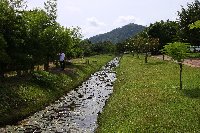 | 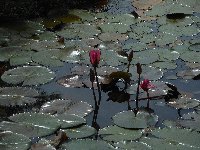 | 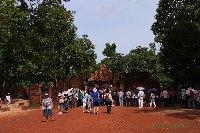 | 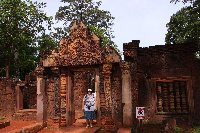 |
| 57. Egy kis csatorna tele vizililiommal - Water channel full with water lilies | 58. Egy kis csatorna tele vizililiommal - Water channel full with water lilies | 59. A Banteay Srei templom főbejárata - The main entrance of the Banteay Srei temple | 60. A templom vörös homokkőből épült - The temple was built of red sand stone |
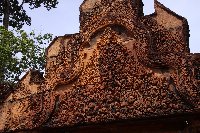 | 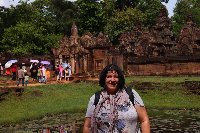 | 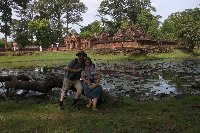 | 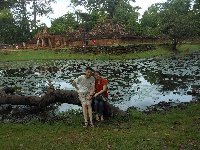 |
| 61. Gazdag faragott díszítések - Rich carvings | 62. Klára | 63. Gábor, Kára | 64. Egy helyes pár Kínából - A nice couple from China |
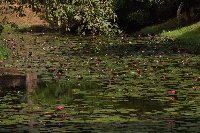 | 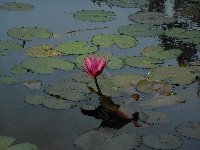 | 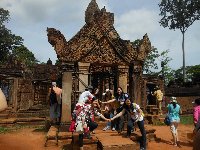 | 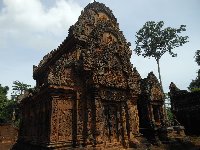 |
| 65. A templom körüli vizesárok tele van vizililiommal - The trench surrounding the temple has lot of water lilies | 66. Vizililiom - Water lily | 67. Vidám turistacsoport -
A group of happy tourists | 68. A mandapa, oszlopos csarnok rituálék számára - The mandapa, which is a pillared hall for rtuals. |
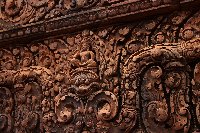 | 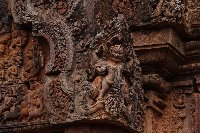 | 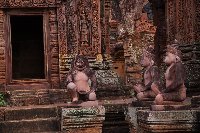 | 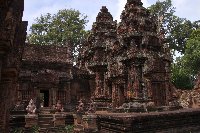 |
| 69. A Kála mitikus fej az időt jelentette - The Kala mythical head represented the time. | 70. Egy másik mitikus alak - Another mythical creature | 71. Majomőrök szobra -
Statues of guarding monkeys | 72. Majomőrök szobra -
Statues of guarding monkeys |
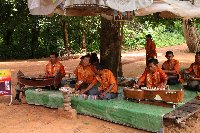 | 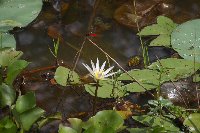 | 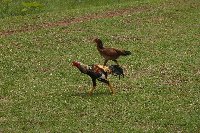 | 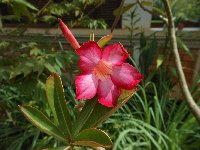 |
| 73. Zenészek - Musicians | 74. Vizililiom - Water lily | 75. Kakas és tyúk - Cock and hen | 76 . Adenium obesum, avagy sivatagi rózsa - Adenium obesum, also known as desert rose |
PRE RUP
Pre
Rup az egykori Khmer Birodalom 961-ben épült hindu főtemploma
Angkorban, Kambodzsában. A II. Radzsendravarman király uralkodása
(944-968) alatt épült, Sivának ajánlott templom. Pre Rup elegáns,
téglalap alapú, három szintes piramisszerű „templomhegy”. Szerkezetileg
két körbefutó, hosszú folyosókkal tagolt galériasorból áll, amelyeket
négy-négy egyszerű átjáró (gopura) díszít. Alapanyagai: tégla, laterit
és homokkő.
Pre Rup is a temple
at Angkor, Cambodia, built as the state temple of Khmer king
Rajendravarman and dedicated in 961 or early 962. It is a temple
mountain of combined brick, laterite and sandstone construction. The
pyramid-like structure is surrounded by galleries, which are ornamented
by four-four gopuras (tower entrances).
|
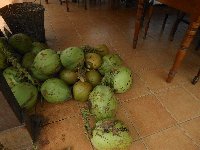 | 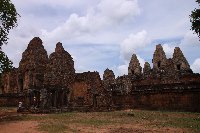 | 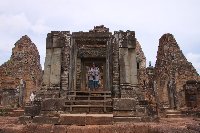 | 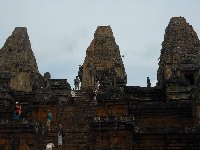 |
| 77. Kókuszdió - Coconut | 78. A Pre Rup templom - Pre Rup temple | 79. A Pre Rup templom - Pre Rup temple | 80. A középső piramis nagyon meredek - The central pyramid is very steep to climb |
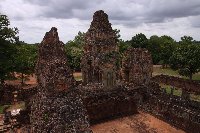 | 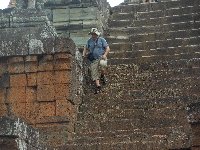 | 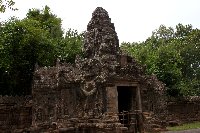 | 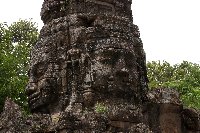 |
| 81. Kilátás fentről - View from the top | 82. Meredek lejönni is - Sttep, and high stairs | 83. Az egyik gopura- One of the gopuras | 84. Óriási kőarcok - Giant stone faces |
TA PROHM
A
Ta Prohm mahájána buddhista templom-kolostor Angkorban, amely VII.
Dzsajavarman király uralkodása alatt a 12-13. század fordulóján, Bajon
stílusban épült, a nevezetes uralkodó édesanyja emlékére. A templom a
dzsungelben van és a köveket látványosan benőtték a gigantikus
méretű "banyan" fák.
Ta
Prohm is the modern name of a temple at Angkor built in the Bayon
style largely in the late 12th and early 13th centuries aby king
Jayavarman the Seven, as a memorial temple of his mother. The temple is
surrounded by the jungle, and giant "banyan" trees are growing into the
ruins.
|
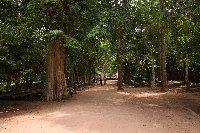 | 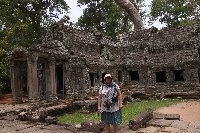 | 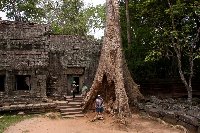 | 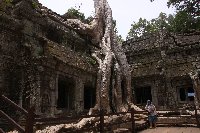 |
| 81. A Ta Prohmhoz vezető sétaút - Walking trail to Ta Prohm | 82. A Ta Prohm templom tetején hatalmas fa nő - Huga tree grows on the temple | 87. Ceiba pentandra vagy kapok fa - Ceiba pentranda or kapok tree | 88. Óriási banyan fa veszi körbe a romokat - The ruins are surrounded by giant silk cotton tree |
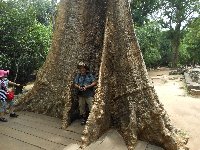 | 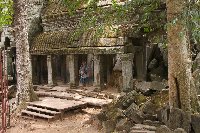 | 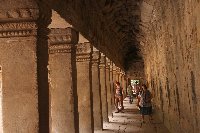 | 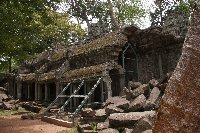 |
| 89. Ceiba pentandra vagy kapok fa - Ceiba pentranda or kapok tree | 90. A Ta Prohm templom - Ta Prohm temple | 91. Oszlopos folyosó - Pillars | 92. Folyamatban van a renoválás - Renovation is in progress |
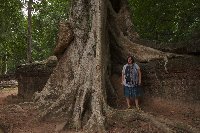 | 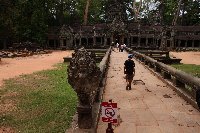 | 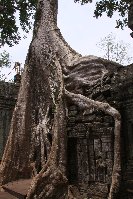 | 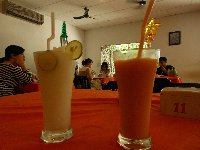 |
| 93. Óriási fa - Giant tree | 94. Az Angkori kőkorlátokat hétfejű kígyó díszíti - Seven headed serpent forming stone balustrade at Angkor Wat | 95. Óriási fa - Giant tree | 96. Lime és mangóital friss gyümölcsből - Lime and mango juice mad of fresh fruit |
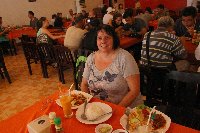 |  |  | 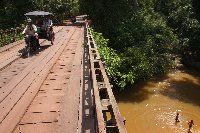 |
| 97. Az ebéd nagyon finom volt - Lunch was very delicious | 98. Ebéd utáni pihi - Rest after lunch | 99. Egy másik templom útközben - Another temple on the way | 100. Lime és mangóital friss gyümölcsből - Lime and mango juice mad of fresh fruit |
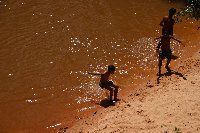 | 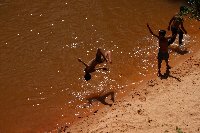 | 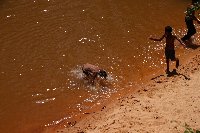 | 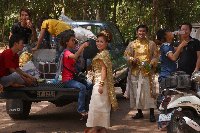 |
| 101. Ugrás 1. - Jump 1. | 102. Ugrás 2. - Jump 2. | 103. Ugrás 3. - Jump 3. | 104. Esküvőzők szép ruhában - Couple in nice wedding dress |
ANGKOR THOM
Angkorthom
– jelentése: "nagy város" – az UNESCO által 1992-ben Világörökséggé
nyilvánított angkori romváros része Kambodzsában. Angkorthom volt a
Khmer Birodalom utolsó fővárosa, amely a 12. század végén, VII.
Dzsajavarman király és örökösei uralkodása alatt épült. A város
területe 9 km². Itt megnéztük a Bayon templomot, a Baphuon 3-szintes
templomot és a Phimeanakas hindu templomromot, ami a Királyi Palota
része volt.
Angkor Thom (
literally means: "Great City"), was the last and most enduring
capital city of the Khmer empire. It was established in the late
twelfth century by King Jayavarman VII. It covers an area of 9 km². We
visited here the Bayon temple, the Baphuon 3-tiers temple and the
Phimeanakas hindu temple which later became part of the Royal Palace.
|
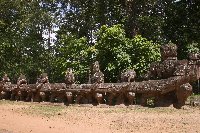 | 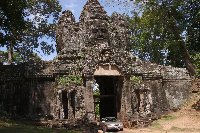 | 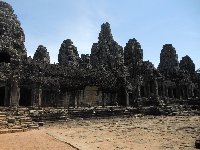 | 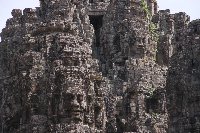 |
| 105. Kígyó kőkorlát Angkor Thom Győzelmi kapujánál balustrade at the Victory Gate of Angkor Thom. - Snake balustrade at the Victory Gate of Angkor Thom | 106. Angkor Thom Győzelem kapuja, két oldalt elefántokkal - The Victory Gate of Angkor Thom, with elephants on both sides | 107. Bayon templom - Bayon temple | 108. Arcok a sziklákon - Faces on the rocks |
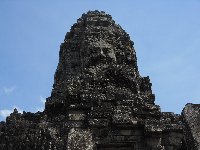 | 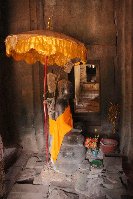 | 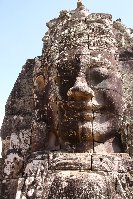 | 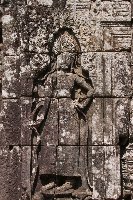 |
| 109. Kőbe vésett arc - Face carved into stone | 110. Buddha és oltár- Buddha and altar | 111. "Angkor időtlen mosolya" - "The timeless smile of Angkor" | 112. Kőbe vésett alak - Stone carving |
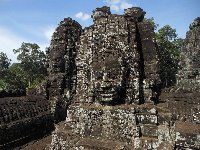 | 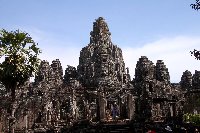 | 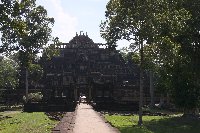 | 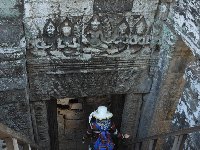 |
| 113. Bayon templom - Bayon temple | 114. Bayon templom - Bayon temple | 115. Baphuon templom - Baphuon temple | 116. Sok itt a lépcső - Many stairs |
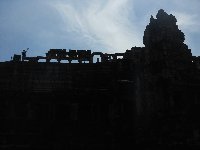 | 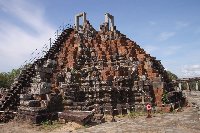 | 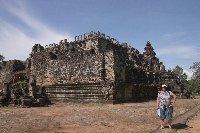 | 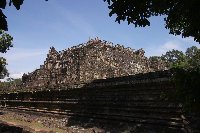 |
| 117. A malegben nem könnyű felmenni a tetejére - Not easy to climb on the top in the hot weather | 118. Baphuon templom felső priamisa - Baphuon temple, the upper píramid | 119-120. Phimeanakas hindu templomrom, ami a Királyi Palota része volt - Phimeanakas hindu temple which later became part of the Royal Palace |
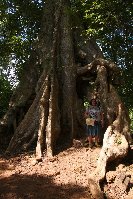 | 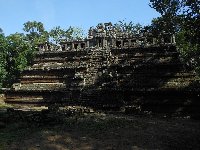 | 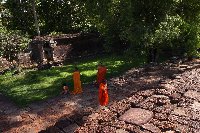 | 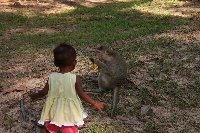 |
| 121. Óriási fa a dzsungelben - Giant tree in the jungle | 122. Phimeanakas | 123. Buddhista szerzetesek - Buddhist monks | 124. Baba és majom - Baby and monkey |
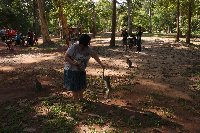 | 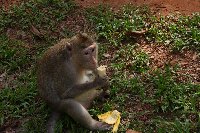 | 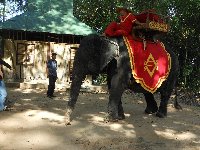 | 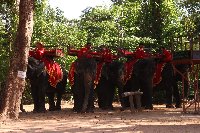 |
| 125. Majom etetés - Feeding monkeys | 126. Majom - Monkey | 127. Elefánt - Elephant | 128. Elefántok - Elephants |
ANGKOR WAT
Angkor
Wat a legjelentősebb templomegyüttes Angkorban, Kambodzsa északnyugati
részén, 240 km-re Phnompentől, a Tonle Sap-tó közelében. II.
Szurjavarman (a győzelem által védett) király uralkodása (1113–1150)
alatt épült Ázsia legnagyobb vallási épületkomplexuma - amely eredtileg
hindu volt, majd buddhista lett - 50 000 munkás, 5000 szobrász és
kőfaragó harminc évi munkájával. Angkorvat a khmer kultúra, művészetek
aranykorának minden kincsében bővelkedik. Ma is működő vallási központ,
fontos szerepet tölt be mind a hinduk, mind a buddhisták körében. A
templom Kambodzsa jelképévé vált – megjelenik a nemzeti zászlón és
címeren, és ez az ország fő turistalátványossága. (Wat jelentése:
templom)
Angkor Wat is
the largest Buddhist temple complex and the largest religious monument
in Asia. The temple was built by the Khmer King Suryavarman II in the
early 12th century in Yasodharapura , the capital of the Khmer
Empire, as his state temple and eventual mausoleum. As the
best-preserved temple at the site, it is the only one to have remained
a significant religious centre since its foundation – first Hindu, then
Buddhist. The temple is at the top of the high classical style of Khmer
architecture. It has become a symbol of Cambodia,appearing on its
national flag, and it is the country's prime attraction for visitors.
(Wat means temple)
|
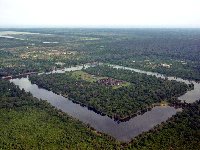 | ANGKOR
WAT látványa a levegőből. A külső fal méretei: 1024 m x 802 m, és a fal
magassága 4,5 m. 30 m széles vadon-sáv veszi körül, és 190 m széles
vizesárok.
The
arial view of ANGKOR WAT. The outer wall, 1024 by 802 m and 4.5 m high,
is surrounded by a 30 m apron of open ground and a moat 190 m wide. | 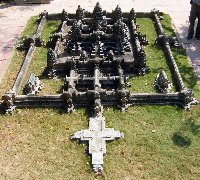 |
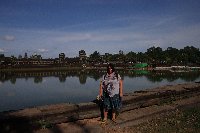 | 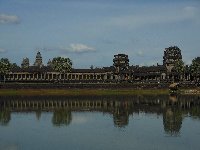 | 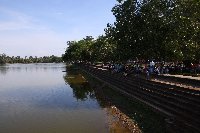 | 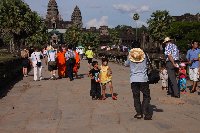 |
129. ANGKOR WAT
Érkezéskor ez a látvány fogadott minket. - The first impression | 130. Fantasztikus látvány - Fantastic view | 131. A parton sok túrista volt és a buddhista ünnepre összegyűlt helyiek is. - There were many tourists, and local people gathered for the Buddhist celebration. | 132. A templomhoz vezető töltésen sokan fotóztak. - Many were taken photos on the way to the temple |
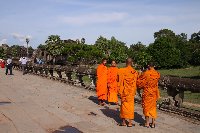 | 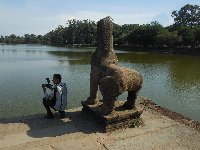 |  |  |
| 133. A szerzetesek is fotóztak. - The monks were also taking photo. | 134. Fotózó férfi és kőoroszlán. - A man taking photo and a stone lion. | 135. A fotó tárgya: egy hölgy és egy kőoroszlán hátsó része. - The subject is: a lady and the bottom of a stone lion. | 136. Esküvőző pár. - A couple in wedding dress. |
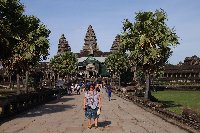 | 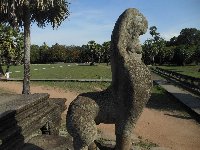 | 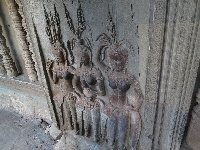 | 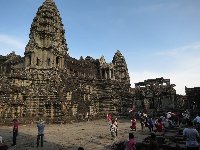 |
| 137. Angkor Wataking photo. | 138. Kőoroszlán. - Stone lion | 139. Dévaták, hindu isteni lények - Deavatas, type of godnesses in hinduism | 140. Angkor Wat felső része - Upper level of Angkor Wat |
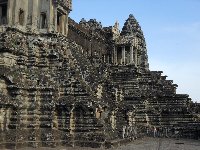 | 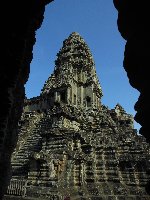 | 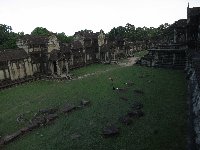 | 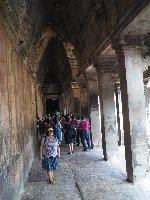 |
| 141. Angkor Wat felső része - Upper level of Angkor Wat | 142. A felső rész ma már le van zárva a túristák elől - The upper level is already closed, not possible to climb up | 142. A felső rész ma már le van zárva a túristák elől - The upper level is already closed, not possible to climb up | 144. Angkor Wat felső oszlopos folyosója - Upper gallery of Angkor Wat |
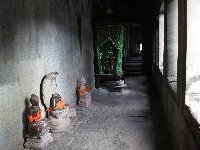 | 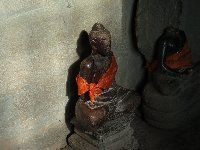 | 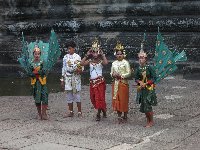 | 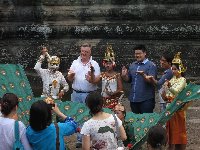 |
| 145. Buddha szobrok - Buddha statues | 146. Buddha szobrok - Buddha statues | 147. Mitikus jelmezbe öltözött fiatalok - Young people in mythic clothing | 148. Mitikus jelmezbe öltözött fiatalok - Young people in mythic clothing |
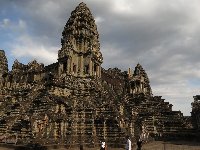 | 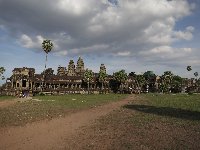 | 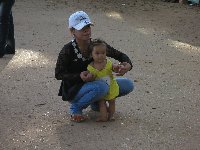 | 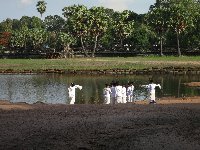 |
| 149. Angkor Wat | 150. Angkor Wat | 151. Baba - Baby | 152. Apácák - Nuns |
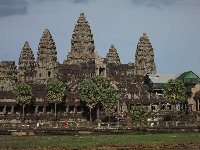 | 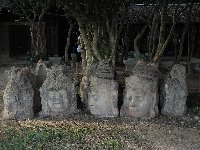 | 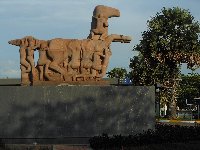 |  |
| 153. Angkor Wat | 154. Kőfejek - Stone heads | 155. Szobor a Siem Reap-i Repülőtér előtt - Statue in front of the Siem Reap Airport | 156. Siem Reap-i Repülőtér, indulunk vissza Bangkokba - Siem Reap Airport, we fly back to Bangkok |




 SIEM RIEP ---> BANGKOK
SIEM RIEP ---> BANGKOK 





































































































































